Architects: Want to have your project featured? Showcase your work by uploading projects to Architizer and sign up for our inspirational newsletters.
Architecture is often seen as the antithesis of camping. Buildings enclose you. Camping is a way of escaping them and being surrounded by the natural elements. People who go on vacation often decide between comfort or camping. The spatial politics of hospitality architecture have traditionally made these two options mutually exclusive. It followed the model of resource access, building large hotels and resorts in more-populated areas, leaving campers to explore remote and hard-to-reach destinations.
But a new paradigm is emerging in hospitality architecture that upends this model. It aims to engage nature in a very intimate way and give vacationers a new type of camping experience: glamping. Glamping, or glamour camping, has often been derided by outdoor enthusiasts as inauthentic. However, architects, with increasing sophistication, are producing nuanced and compelling structures that provide some comforts while placing visitors in remote and often harsh locations.
The buildings below explore ideas of permeability and permanence, allowing more nature in and questioning what roles structures like these have in the future. Glamping is not without its own set of challenges, setting up power dynamics that can exploit land and resources and often accessible only to a privileged few. But all of these buildings fall on a spectrum, exploring the balance between comfort and camping.
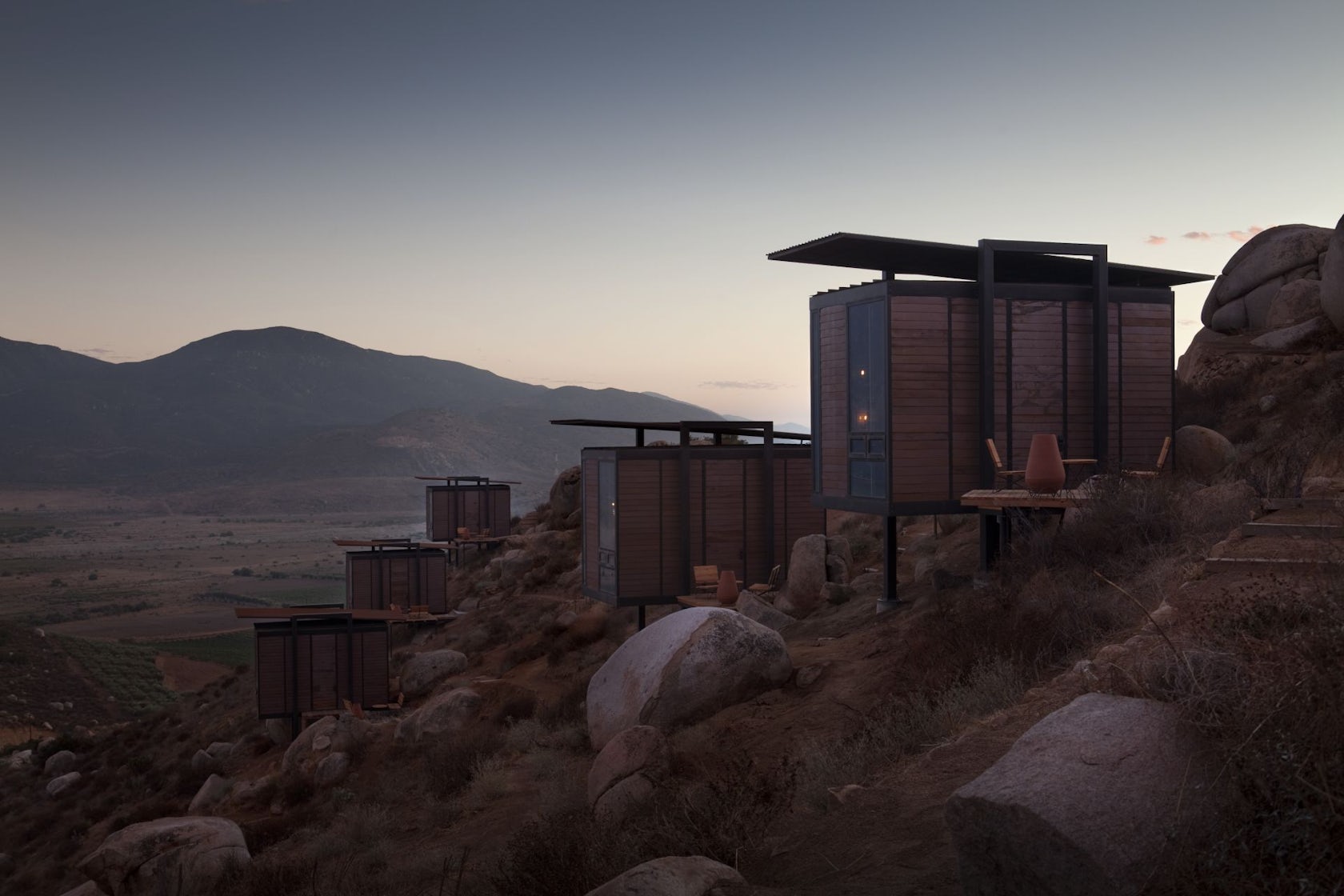
© GraciaStudio

© GraciaStudio

© GraciaStudio
Endémico Resguardo Silvestre by Gracia Studio, Guadalupe, Mexico
Overlooking Mexico’s wine country, these hotel rooms are lifted off the ground in an effort to not interfere with the natural landscape. The architects wanted to provide for the visitor’s basic needs while also exposing them to the landscape and environment of Guadalupe.

© Snorre Stinessen Architecture

© Snorre Stinessen Architecture

© Snorre Stinessen Architecture
Manshausen Island Resort by Stinessen Arkitektur, Steigen, Nordland, Norway
Situated on the island of Manshausen in Northern Norway, these resort cabins sit cantilevered over the sea, with special consideration given for the placement of each cabin. The buildings have a low impact on the land and are designed to be weather and wind resistant.
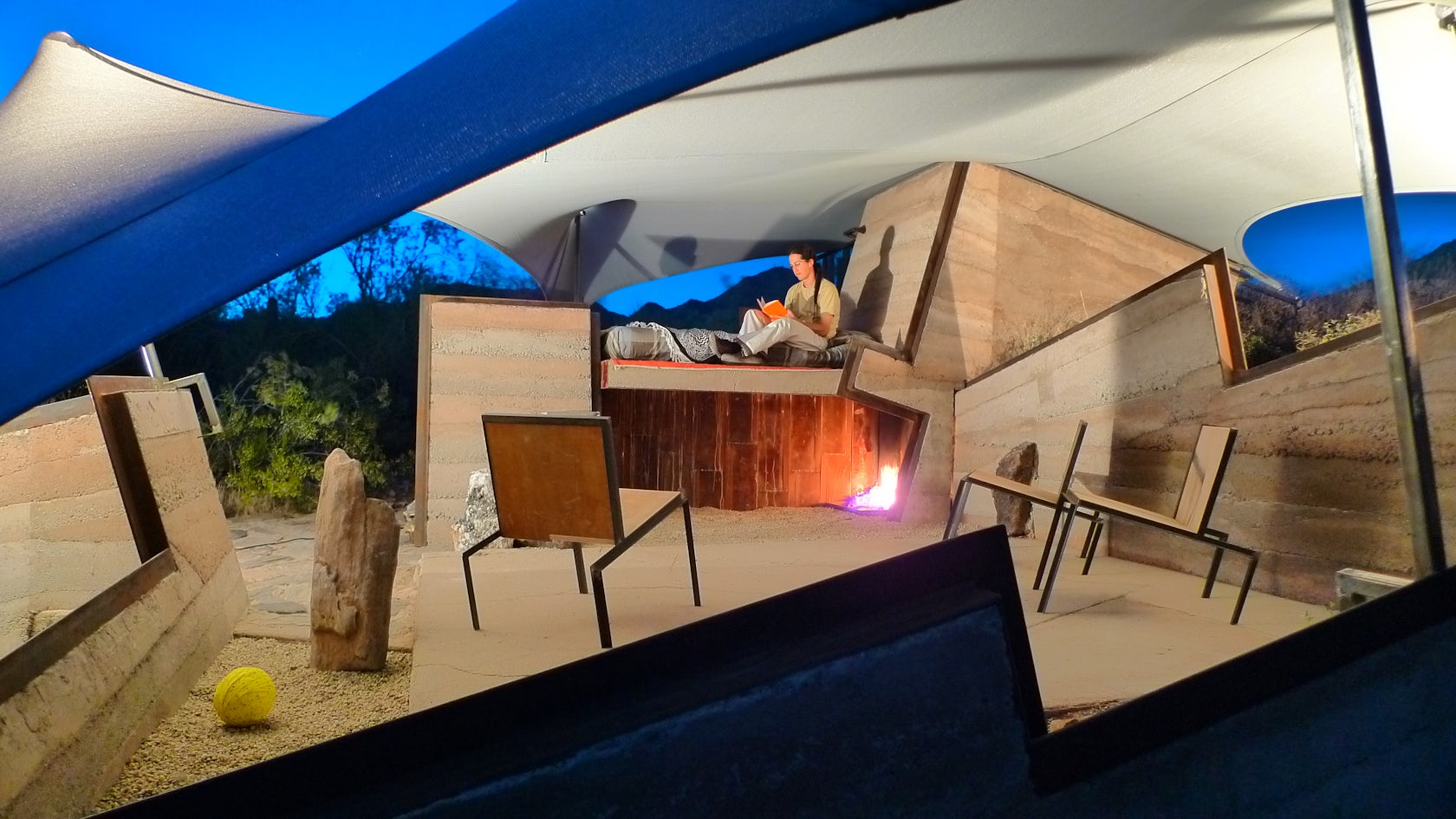
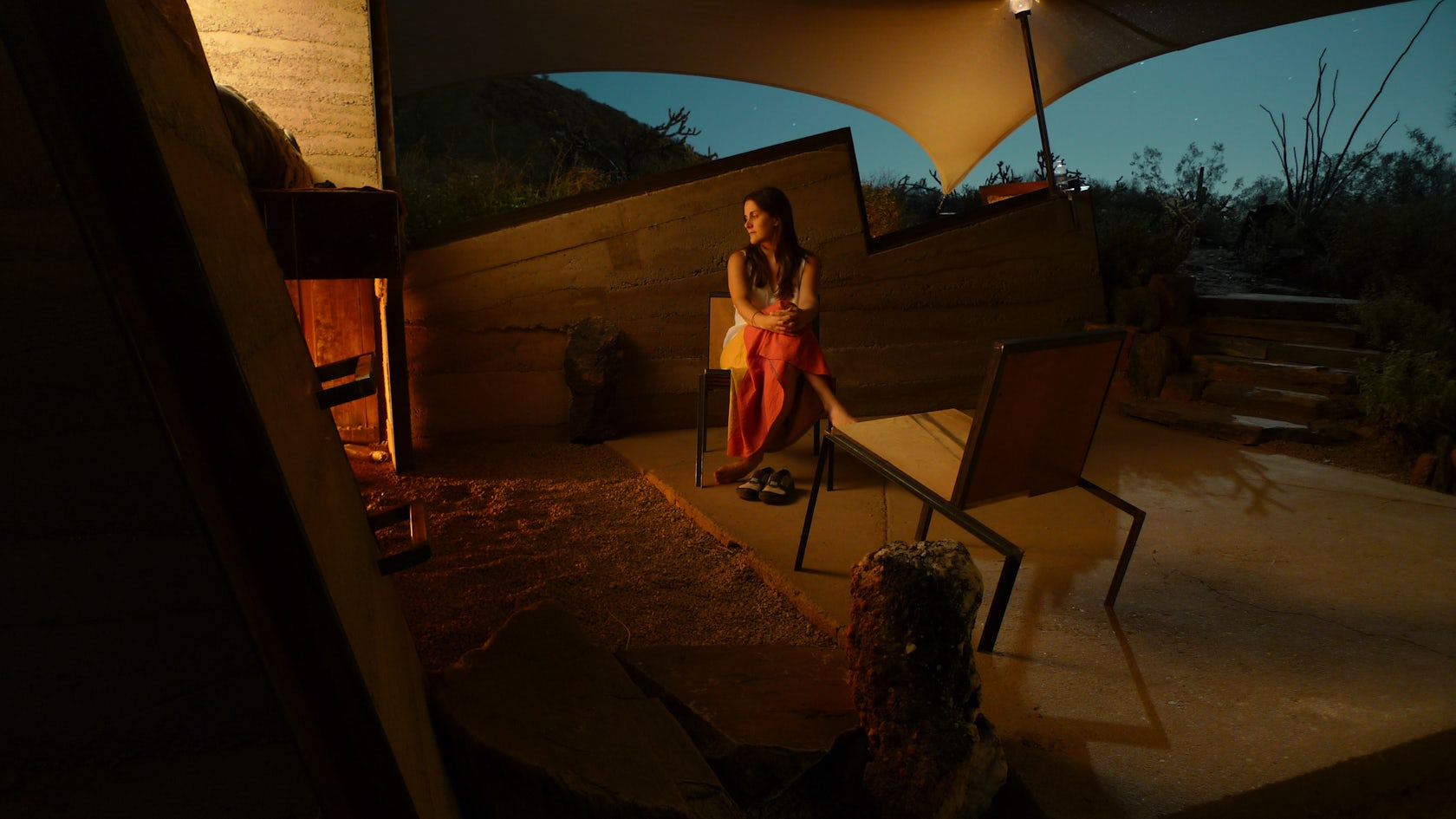
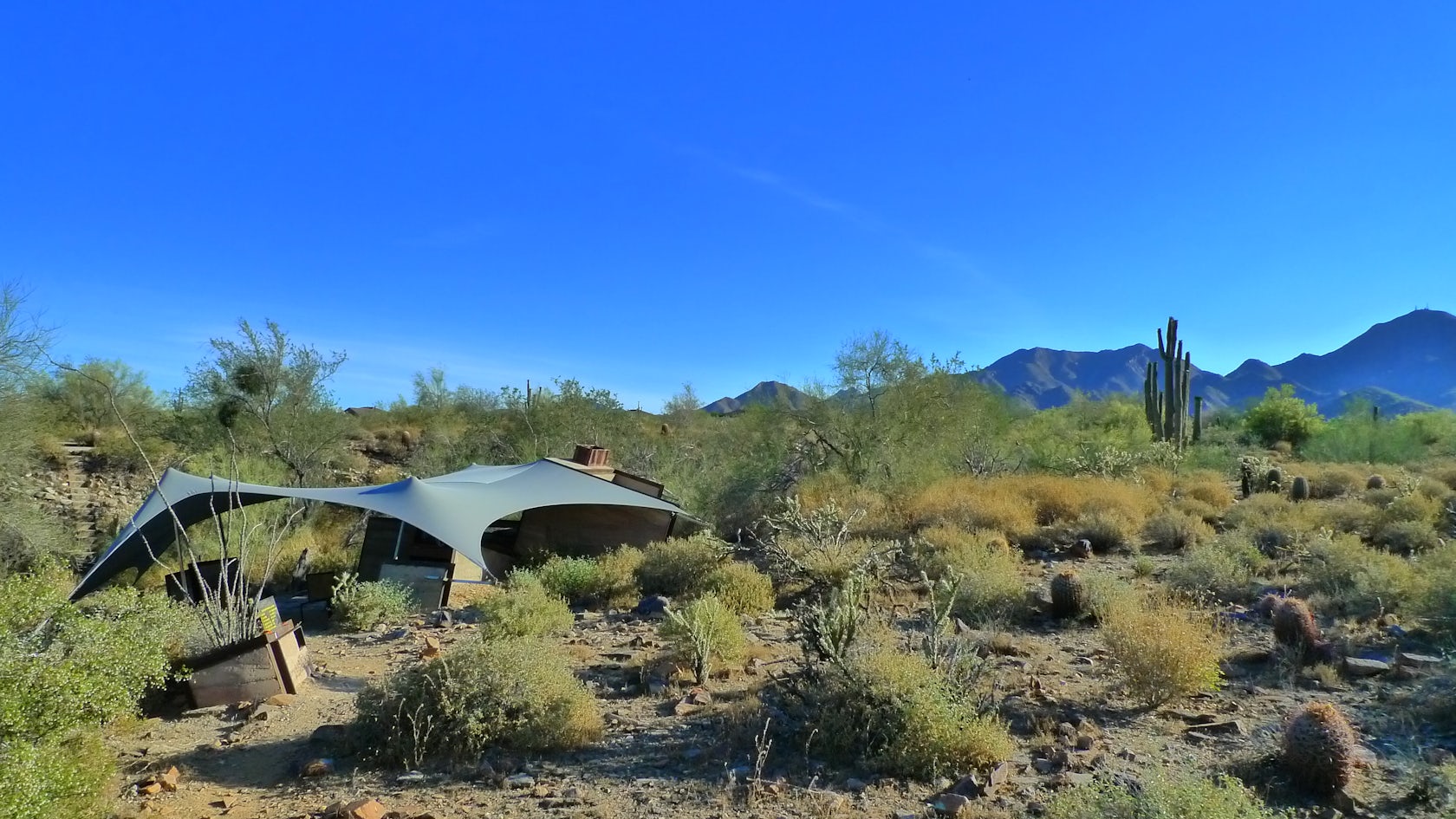
Brittlebush by Simón De Agüero, Scottsdale, Arizona, United States
Brittlebush is a design-build project by senior student Simon De Aguero at the Frank Lloyd Wright School of Architecture at Taliesin. The structure is intended for winter use, with the fireplace located under the concrete bed support.
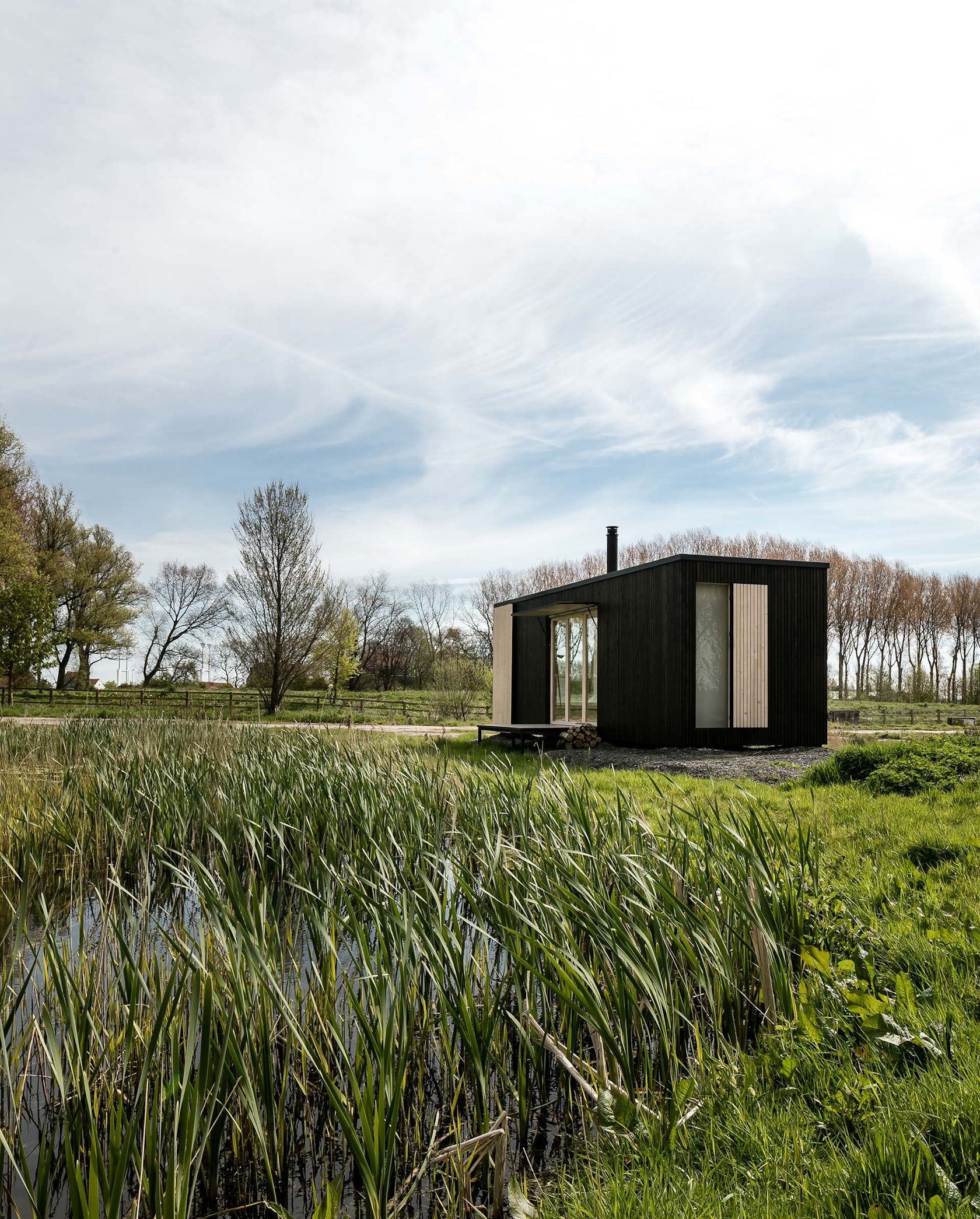
© Ark Shelter

© Ark Shelter

© Ark Shelter
Shelter S by Ark Shelter, Bruges, Belgium
Another student project, Shelter S is intended to be a mobile structure. It is designed to be self-contained for moving and expandable when on site to allow the resident to be in closer contact with their surroundings.

© Tina Demšar Vreš

© Tina Demšar Vreš
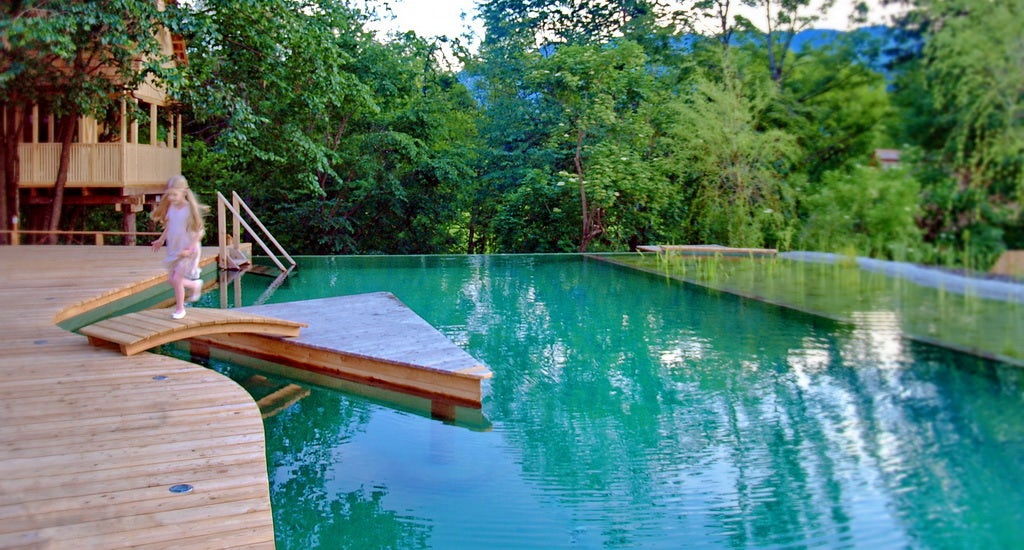
© Tina Demšar Vreš
Garden Village Bled by Landscape d.o.o., Bled, Slovenia
A self-styled “eco-chic” resort in Bled, Slovenia, the Garden Village winds through the Alpine landscape. The village is equipped with a range of luxuries, including a sauna and herb and fruit gardens.
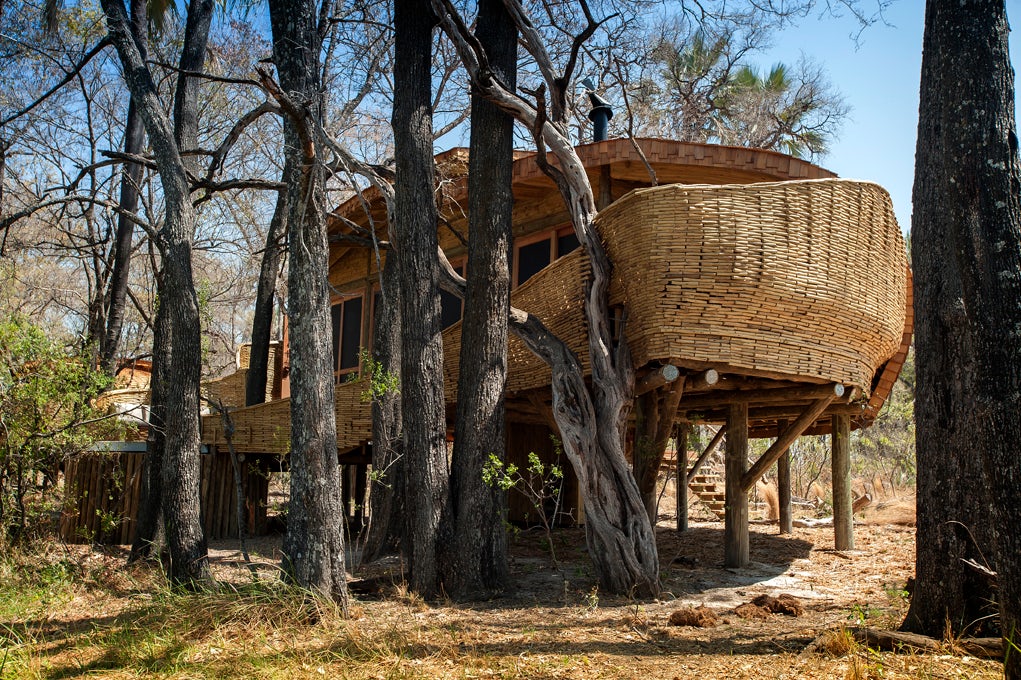
© DOOK Photography

© DOOK Photography

© DOOK Photography
Sandibe Okavango Safari Lodge by Nicholas Plewman Architects, North West, Botswana
One of the more extreme examples of glamping, this safari lodge in Botswana offers a luxurious resort experience to visitors while also respecting the surrounding ecology. The building is made from fully biodegradable materials and was designed with as little impact to the local environment as possible while also providing world-class service to its guests.
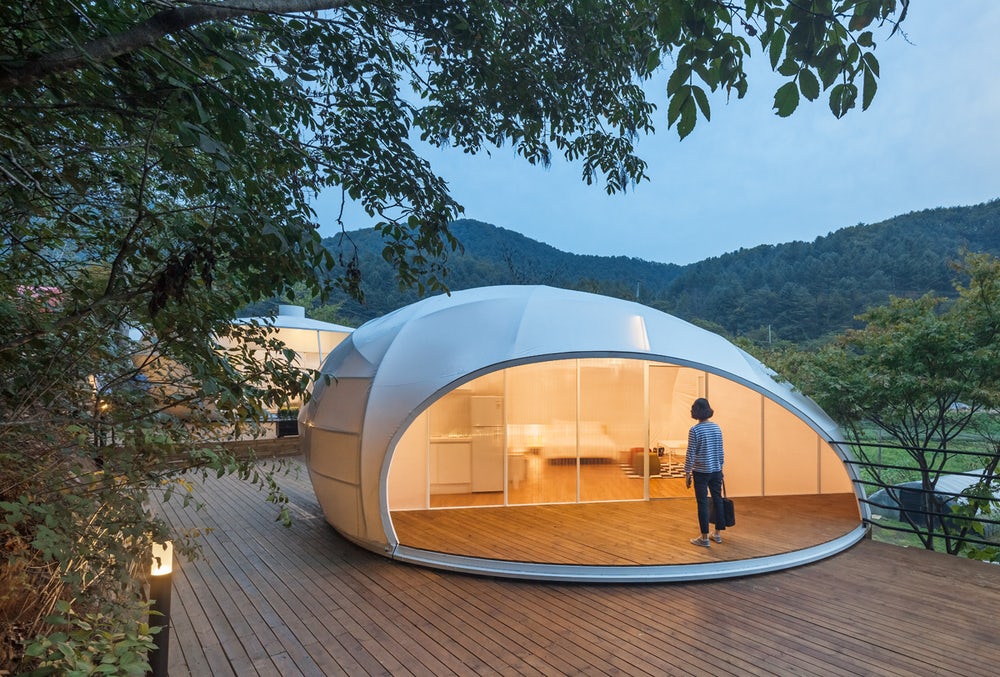
© Kyungsub Shin
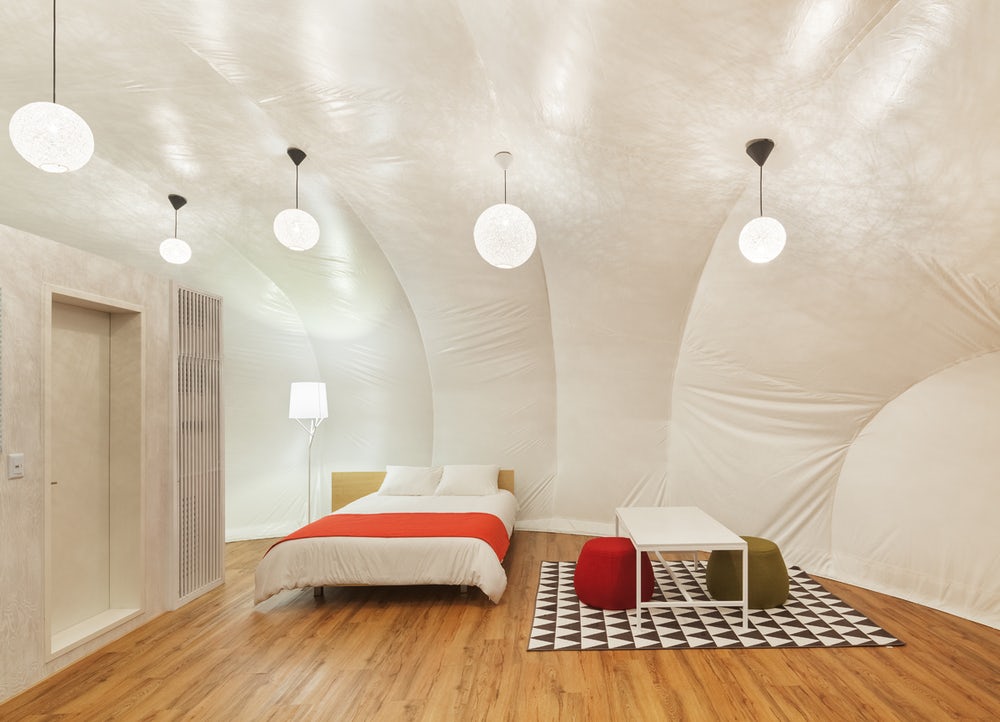
© Kyungsub Shin
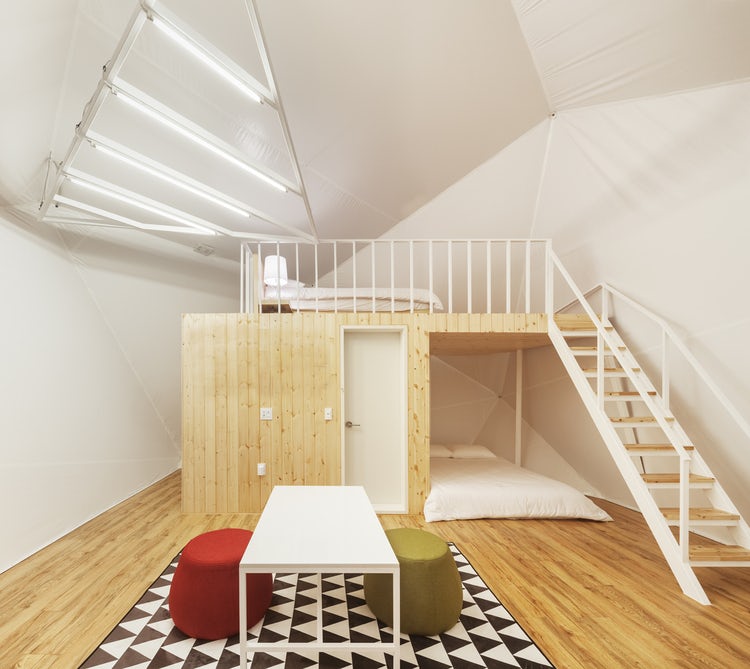
© Kyungsub Shin
Glamping by Atelier Chang, Yangpyeong-gun, South Korea
The Glamping structures by Atelier Chang are womb-like enclosures that sit within the scenic mountains of Yangpyeong-gun, South Korea. The structures are made from a steel frame wrapped in weather-resistant fabric.
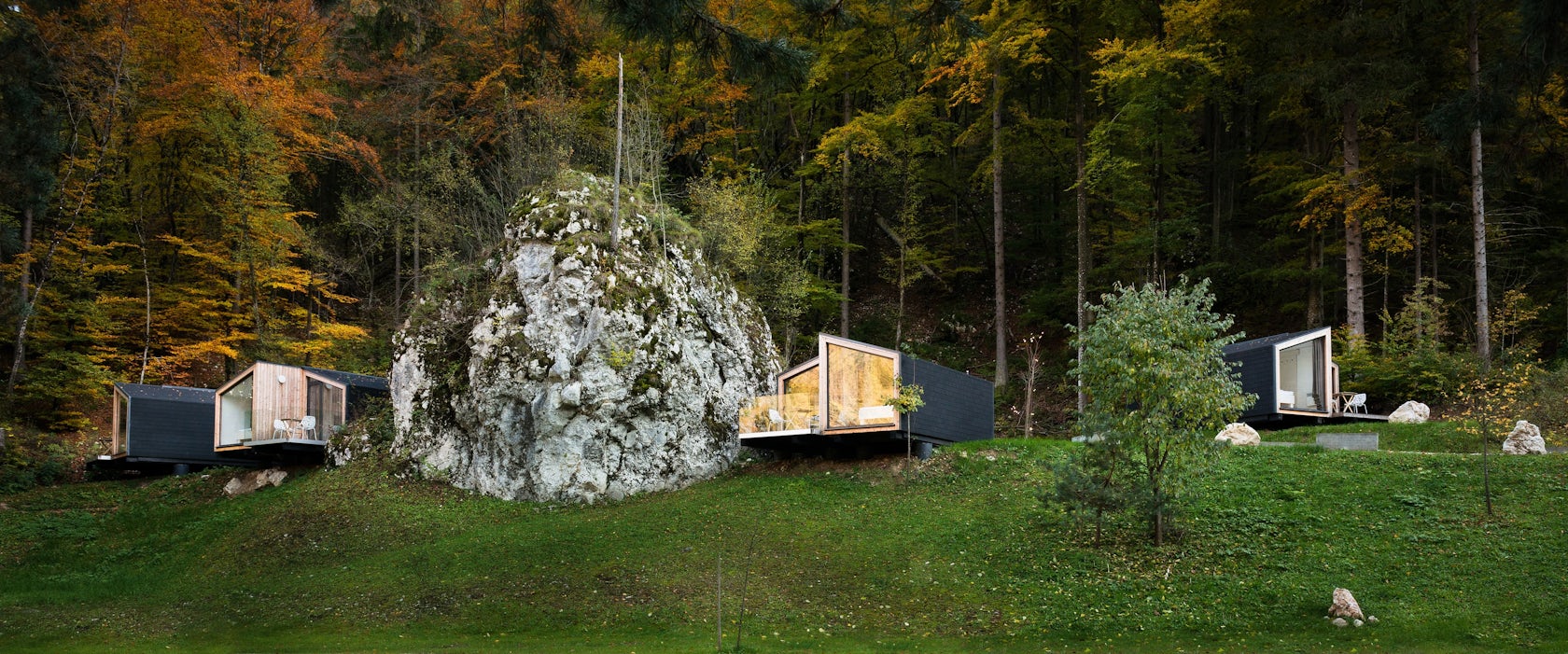
© Janez Marolt
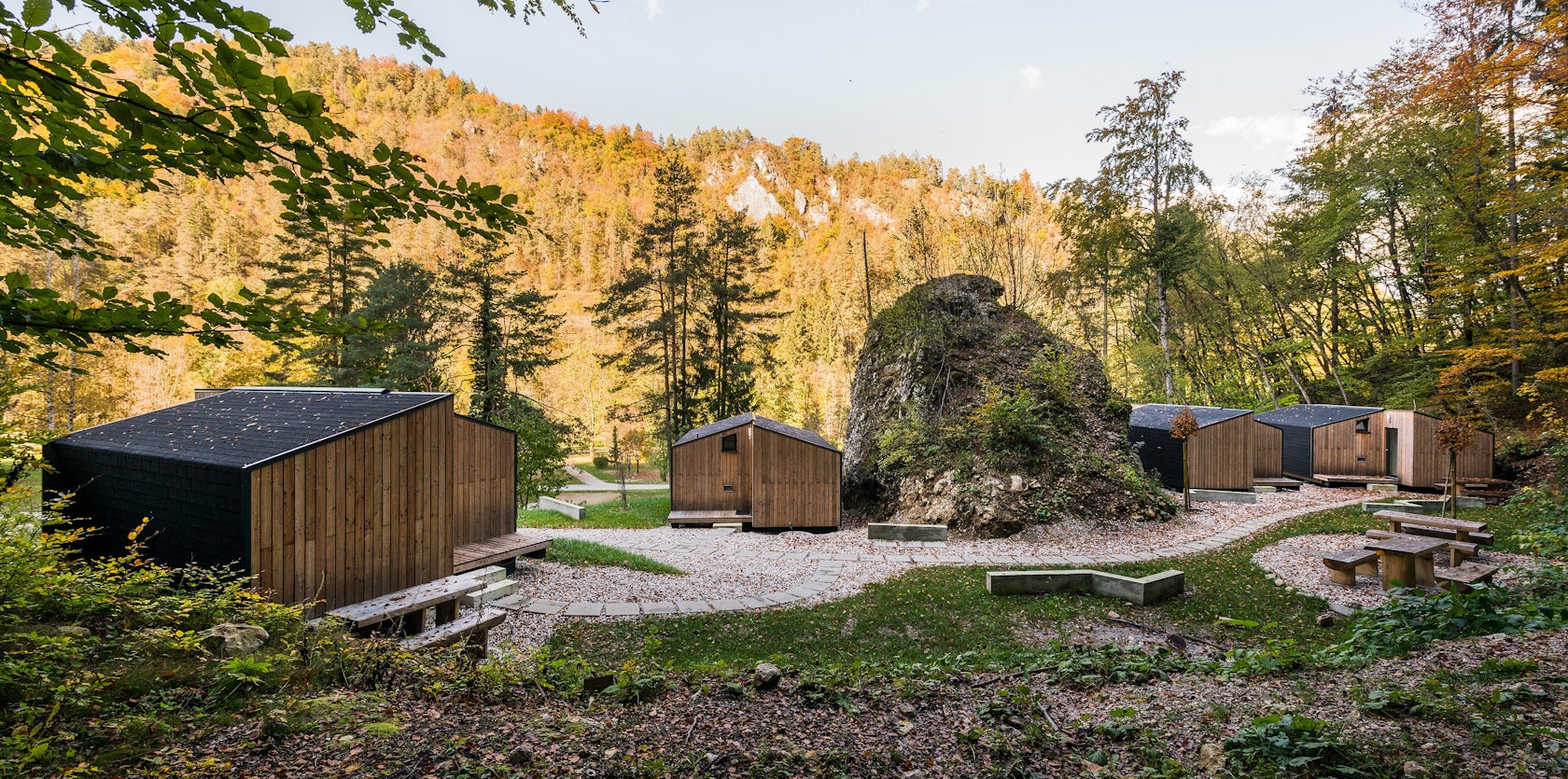
© Janez Marolt

© Janez Marolt
mini for-4 by ekokoncept prefabricated buildings, Bled, Slovenia
Mini for-4 was designed as a low-impact upgrade for a camping site in the mountains of Slovenia. The owners wanted to offer more amenities to its visitors while still maintaining direct contact with the surroundings.
Architects: Want to have your project featured? Showcase your work by uploading projects to Architizer and sign up for our inspirational newsletters.




